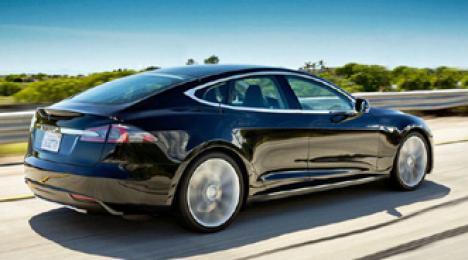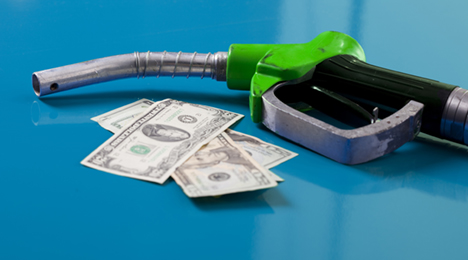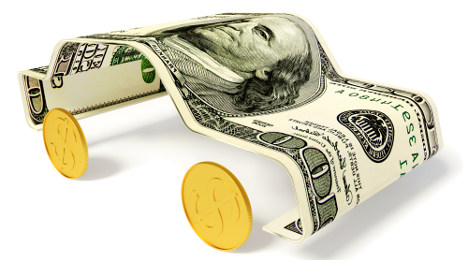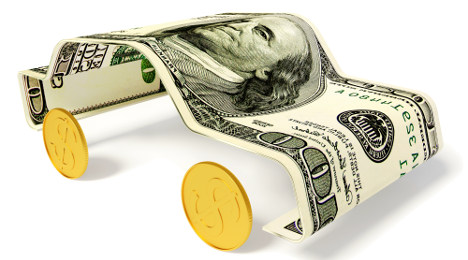In addition to forecasting a stronger used-car SAAR for May, Edmunds.com pointed out some other positive signs for the used market — or at least, for future supply of pre-owned vehicles — that have occurred this spring.
The company said in a sales forecast released Thursday that year-to-date lease penetration through April was at an all-time high of 27.9 percent. Not only that, Edmunds is predicting just under 1.55 million new-vehicle sales for May, which would be the strongest single-month total in seven years.
The last time dealers sold this many new cars in a month was May 2007, when they moved 1,555,945 units, according to Edmunds.
As for the used-car market, Edmunds is predicting an estimated 3.05 million used sales for May.
While this is down from 3.10 million in April, the expected used-car SAAR for the month (36.4 million) is ahead of April’s pace (35.9 million).
Other industry observers have released used-car sales forecasts for May in recent days, as well.
At CNW Research, the firm was expecting that, based on the first half of the month, May’s used-vehicle sales volume will likely approach 4.5 million units and beat year-ago figures by 1.5 percent.
In its latest Retail Automotive Summary, CNW said it was forecasting 4.46 million used sales this month, which would compare to 4.39 million in May 2013.
This would also put the year-to-date tally at just under 15.9 million, which outpaces the 15.65 million used cars sold through five months of 2013.
Meanwhile, TrueCar was calling for an estimated 3.24 million used sales for May, with a new-to-used ratio at approximately 1:2.1.
With the help of a hefty loan from the Department of Energy in 2009, Tesla Motors has survived infancy, and is becoming more and more popular, as it expands its lineup and plans to offer a more affordable option for consumers in the near future.
The company has now been around long enough to start making a splash on the remarketing side of the industry, though the amount of Teslas entering the used market remains low.
For example, earlier this month, online auto retailer Carvana announced that what it’s calling the first Carvana certified pre-owned Tesla is now available on its website.
And Tesla postings on AutoTrader.com are showing significant boosts in shopper interest this spring. Auto Remarketing gained some insight into how these used vehicles are performing on the site from Mark Strand, industry intelligence manager at AutoTrader.com.
If you don’t think Tesla is making waves among car shoppers, check out this statistic.
Last month, Tesla models showed 929 percent more interest per listing than other vehicles in their competitive set on AutoTrader.com.
That said, “As the number of listings for used Tesla models on our site increases, the interest level will naturally become more consistent with other vehicles in the competitive set,” Strand added.
With that in mind, due to the increasing number of Tesla listings, AutoTrader is seeing a decline in the number of views per listing, he explained.
“However, this does not mean that interest is necessarily waning. As of right now, people interested in searching for used Teslas have fewer listings to view, so the percent of views per listing is naturally higher,” he said. “As more listings are posted on the site by dealers and private sellers, the percentage of views per listing will normalize.”
Interest in the luxury vehicles is still growing, though, and AutoTrader anticipated the difference in interest per listing to remain high for the foreseeable future.
And though the Tesla units still account for less than 1 percent of their competitive group on the site, the number of used Teslas listed on AutoTrader.com has grown by 820 percent.
But since the pre-owned market penetration remains low, Strand says, “They are unlikely to have a significant impact on the used market at their current level, and it will likely be several years before that could change.”
But there is no denying the number of used Teslas entering the market is growing. And this brings up the following question: Will dealers seek them out for their lots?
This poses an interesting point as franchised and independent dealers alike have been rallying against the automaker in opposition to its direct-to-consumer sales model, with lawsuits popping up all over the country in early 2014.
Stand says this shouldn’t have any impact on whether dealers intend to sell used Teslas.
“I think dealers will be able to keep any feelings around the Tesla direct sales model separate when looking at the profit opportunity a used Tesla could present. If the opportunities are there, I think dealers will be open to them, especially independent dealers who specialize in high-end luxury and exotics,” said Strand.
But it is too early to know much about Tesla retention rates and whether they will prove to be a good investment for dealers’ used departments.
“It’s early to draw definitive conclusions at this point. However, given the restrained supply and rave reviews the car gets, dealing in a good quality used Tesla seems like a solid opportunity for a dealer who is experienced in handling exotics and high end niche vehicles,” Strand said.
Market trends such as supply and demand are at work here, too. “In the short term, limited supply should keep used values on Teslas relatively high,” Strand said.
“But further down the road, as production capacity expands and the buzz dies down, I would expect used Teslas to lose some of their premium. From the consumer perspective, if someone is in the market for a Tesla, I don’t think he or she will be focused foremost on value retention and investment, as that person likely has some cash to burn,” he continued. “Even with strong value retention in the short term, we don’t know enough about how these cars age to know what the investment/depreciation will look like five to 10 years out, with high mileage or when the batteries near end of life.”
Much is still unknown about Tesla’s potential impact on the used-car industry, but the numbers are growing at a rapid pace — only time will tell what long-term effects the automaker will have on the EV and remarketing industries.
The Environmental Protection Agency recently announced that diesel vehicles are making a bit of a comeback in the U.S., as fuel efficiency becomes more of a concern.
Auto Remarketing reported on NADA Used Car Guide’s analysis of the diesel market here last week.
NADA determined through comparing two different 3-year-old vehicles and their respective diesel counterparts — the Volkswagen Jetta and Mercedes-Benz ML350 — retention in the diesel models was much stronger.
Another boon for consumers: the comparison also showed considerable annual fuel savings for diesel models.
To help gauge whether the rebounding popularity of diesel vehicles is just a fluke or here to stay, Auto Remarketing chatted with David Paris, NADA UCG automotive analyst.
According to FuelEconomy.gov, diesel engines are more powerful and fuel-efficient than similar-sized gasoline engines.
The site points out diesel models are about 30 to 35 percent more efficient than their gasoline counterparts, plus today’s diesels are much improved over past models.
“Today’s versions offer better performance due to improved technologies, which have allowed for increases in power, acceleration and overall efficiency,” said Paris. “The new engine designs along with noise and vibration damping technologies have made diesels quieter and smoother traveling down the road.”
Another factor pushing the surge in popularity of diesel vehicles is expanding choices in the market, as much of the issue with diesel sales in the past has been lack of options.
“Many automakers have offered diesel engines as options in vehicles overseas for years now, so the technology is there and ready to go,” Paris said.
He offered the example of the Chevrolet Cruze diesel.
In April 2013, Chevrolet announced that they would be offering the model with a clean diesel engine option for North America.
“Globally, this model had been offered with a diesel engine for many years,” Paris added.
And the 2014 Dodge Ram 1500 diesel is another example, as “it’s the first half-ton pickup with a turbo diesel to hit the market,” Paris said.
The Draws of Diesel
One of the biggest draws to new diesel vehicles is fuel efficiency. But as electric vehicles and hybrids become even more affordable, perhaps coming in line with diesel model pricing, will this serve to push diesel unit sales down?
Paris says this isn’t a concern, as the initial choice between gas, diesel, hybrid or electric vehicles ultimately depends on what kind of driving the consumer plans on doing.
“Hybrid and EV vehicles are most practical when used for shorter trips or city driving. EVs are range limited; and while charging stations are becoming more prevalent, it’s still difficult to plan a long distance trip, which hurts their real world usability,” Paris said.
Diesel vehicles, on the other hand, offer similar efficiency as a hybrid or EV, “but their real world versatility is much, much greater,” Paris says.
Diesels are also more well known, as EVs and hybrids are relatively new to the market. Chances of fewer repair surprises might serve to draw shoppers with fuel efficiency on the mind to diesel models.
“And unlike EVs, you don’t have to plug diesels in and their operating range is significantly greater. Diesel engines are also known to produce lots of torque, which is great for SUV and truck buyers who use their vehicles to tow,” Paris noted, highlighting a few other factors that might imply diesel popularity might continue to grow.
Fuel-Efficiency Comparison
Another key factor to look at in judging whether consumers will buy diesel or turn toward hybrid is annual fuel savings.
NADA UCG provided a comparison of the diesel, hybrid and gasoline versions of the 2013 Volkswagen Jetta based on an annual mileage of 15,000.
According to Paris’ calculations, the diesel VW Jetta saved $221 compared to the gasoline version, but costs $559 more to operate than the hybrid.
The diesel model’s average 2013 fuel cost was $1,729, while the annual fuel costs for the hybrid model came in at $1,170.
Though hybrids are, of course, more fuel efficient, there are many plusses when it comes to buying diesel, Paris said, especially if the shopper is planning long trips or prefers well-known technology.
Diesel does provide relief from spending on fuel when compared to their gasoline counterparts, though, but the question remains: will rising gas and diesel costs put a damper on the fuel efficiency plusses of diesel vehicles?
Paris says it won’t have much of an effect, since shoppers buy diesel vehicles for a ranging variety of reasons.
“Rising fuel costs could put a damper on the plusses of diesel vehicles; however, every driver’s situation is different and must be analyzed on a case-by-case basis,” said Paris. “Diesel is not always the best option and depending on individual usage it might make more sense to purchase a gasoline, hybrid or EV model.”
Diesel is Tops for Retention
Another plus NADA UCG pointed out last week was the diesel models' strong retention rates.
For example, according to NADA UCG’s comparison analysis, the Jetta TDI retained 60.1 percent of its original value after three years of depreciation, while the gasoline-only SE model retained 51.6 percent.
The same situation was found for the Mercedes-Benz ML350.
After three years, the ML350 BlueTEC 4MATIC retained 52.3 percent of its original value, while the gasoline-only ML350 4MATIC has retained 47.1 percent.
Paris says the short answer to what factors are pushing retention rates up for diesel models is basic supply and demand.
“Consumer awareness of, and demand for, fuel-efficient yet powerful diesels has grown more rapidly than the number of models available in the marketplace. Rather than dedicate R&D resources to diesels, most OEMs have elected to concentrate on improving gas engines, hybrids and EVs,” Paris explained.
Although final numbers are still being sorted out, April’s used-vehicle sales likely reached a summit just a shade under 4 million, according to CNW Research, which said this would beat year-ago numbers by 3.7 percent.
The firm put out its latest Retail Automotive Summary on Wednesday, not long before many automakers were releasing monthly certified pre-owned numbers. Much like the growth in overall used numbers, the certified segments appears to have had a solid April, as well, based on early indications.
Hyundai, for example, had its strongest April ever. It moved 7,930 CPO cars for a 27.5-percent year-over-year increase. Through four months, Hyundai has sold 30,278 certified vehicles (up 26.4 percent).
At Mazda, its dealers increased April CPO sales by 13 percent, moving 3,317 units. In four months, Mazda has sold 13,533 certified vehicles for a 17-percent hike.
Porsche’s certified sales climbed 24 percent year-over-year and reached 1,021 units for April. Year-to-date, its CPO sales are at 3,656 units, a 15-percent increase.
At Ford, its CPO brands combined to move 21,911 units for April and they have sold 85,771 CPO cars year-to-date.
By brand, there were 2,187 Lincoln CPO sales in April and 8,099 so far this year.
For Ford/Mercury, those numbers were 19,724 and 77,672, respectively.
Volkswagen’s 7,922 certified sales in April were down 3.82 percent from a year ago, and its year-to-date sales are off 8.11 percent at 29,393 units.
More certified pre-owned results will be available in forthcoming editions of Auto Remarketing Today.
Going back to CNW data’s on the overall used market, the firm was expecting franchised dealers to have sold 1.41 million used units in April for a 4.7-percent upswing. It pinpointed the independent dealer total at 1.28 million, an increase of 3.9 percent.
CNW forecasted private-party sales of 1.26 million for a 2.2-percent hike.
Though initial projections for April’s used-car sales total vary a bit, it appears the market should well exceed 3 million units sold for the month.
TrueCar is forecasting just over 3.4 million used sales for April, with a new-to-used ratio of approximately 1-to-2.5.
Meanwhile, over at Edmunds.com, analysts are projecting 3.08 million used-car sales this month. That would results in a used SAAR of 35.4 million. In March, Edmunds indicates there were 3.43 million used sales with a SAAR of 34.9 million.
These projections arrived around the same time that the publicly traded dealership groups were issuing their performance reports from the first quarter.
Below is a rundown of how their retail used-vehicle sales fared in Q1, according to their respective earnings releases:
AutoNation
Q1 Retail Used-Vehicle Unit Sales: 52,136
Year-Over-Year Change: Up 3.2 percent
Sonic Automotive
Q1 Retail Used-Vehicle Unit Sales: 27,657
Year-Over-Year Change: Up 4.5 percent
Asbury Automotive Group
Q1 Retail Used-Vehicle Unit Sales: 18,503
Year-Over-Year Change: Up 13.2 percent
Group 1 Automotive
Q1 Retail Used-Vehicle Unit Sales: 26,877*
Year-Over-Year Change: Up 15.7 percent*
*Note: Includes international and U.S. results
Penske Automotive Group
Q1 Retail Used-Vehicle Unit Sales: 45,370*
Year-Over-Year Change: Up 14.8 percent*
*Note: Includes international and U.S. results
Lithia Motors
Q1 Retail Used-Vehicle Unit Sales: 16,316
Year-Over-Year Change: Up 19.4 percent
Used-car sales for March likely climbed just under 4 percent year-over-year, according to CNW Research, which also noticed that both used supply and retail prices were falling during the month.
In its latest Retail Automotive Summary, CNW predicted March used-car sales of 3.12 million units when combining projected figures from franchised and independent dealers with private-party transactions.
This sum would be a 3.8-percent year-over-year increase and put the first-quarter used-car sales tally at 7.51 million units, a 0.9-percent gain.
Franchised dealers are expected to have sold 1.15 million used units in March, up 5.8 percent from a year ago. Indepedents likely moved 1.09 million used cars for a 13.5-percent gain. CNW was forecasting an 8.3-percent decline in private-party sales, which were pegged at 880,996 units for the month.
As for Q1 results, franchised dealers likely sold 2.73 million used units (up 2.4 percent) and independents were at 2.49 million units (up 4.4 percent), with private-party sales of 2.29 million (down 4.6 percent).
Moving along, CNW also noted that floor traffic dropped during March. Art Spinella, company president, explained in the report the relationship that trend has had with used supply.
“Floor traffic at used-car outlets is off 4 percent, but those who are still in the market and making those showroom visits are buying more often, boosting the overall sales numbers,” he noted. “The result is that days’ supply of used vehicles actually slid 6.3 percent as inventory was picked over in some parts of the country and a ready source of the hot or most popular models was unavailable.”
Delving into pricing trends, franchised dealers’ asking prices were expected to be down 3.47 percent year-over-year in March, with transaction prices down 1.49 percent. As for independent dealers, their asking prices were predicted to fall 4.17 percent from March 2013 with transaction prices down 1.56 percent.
“On the positive side, both channels had positive percentages for share of asking price they received,” Spinella noted.
More specifically, for franchised dealers that was 96.05 percent (up from 94.12 percent in March 2013); for independents, it was 96.37 percent (up from 93.81 percent).
While parts of the Northeast are digging out from one last snowstorm of the season, Manheim’s Tom Webb chose to tie together gardening and how the industry is improving.
In the March Auto Industry Brief from Manheim Consulting, Webb explained many economic watchers will be looking at how warmer weather will help performance.
“Now that the weather has begun to thaw in many parts of the country, it is predictable that analysts will be pointing to every ‘green shoot’ as a harbinger of accelerating economic growth,” Webb said.
“We’re optimistic that the recovery can continue apace, but would be skeptical about any sign that promises a meaningful quickening in the rate of growth,” he continued. “Most green shoots prove to be weeds. They are quick growers – and, indeed, might even look nice after a harsh winter — but they are nothing to celebrate.”
Webb elaborated on his gardening analogies with a recommendation to policy makers who oversee how the economy functions.
“Those tending the economic garden would be wise to nourish that which is already growing, select plant seeds known to produce, and be patient,” Webb said.
“Our economic garden already has a horrendous weed (entitlement spending) that threatens to crowd out all else. It’s idealistic to think that large clump can be removed, but we should at least avoid watering it with indiscriminate stimulus,” he added.
Webb didn’t leave his economic garden discussion before touching on how the auto industry fits into the landscape that is the U.S. economy.
“Since the recovery’s beginning, the auto industry has been the fast-growing, hardiest and prettiest plant in the garden,” he said. “Even heavy winter snows failed to completely cover it.
“Our belief is that the auto industry recovery has nearly reached its mature height,” Webb went on to say. “We shouldn’t dump fertilizer (incentives) on it. It will only grow gangly and burn out.”
Used-vehicle sales this month are likely to be north of 3.4 million, says TrueCar.com, which released its monthly new- and used-car projections on Monday.
Specifically, TrueCar is forecasting an estimated 3.437 million used sales for March with a projected new-to-used ratio of 1:2.3.
The firm is calling for 1.478 million new-vehicle sales (including fleet sales) for the month, which would be a 1.8 year-over-year hike and more than a 24-percent improvement from February — but still not as high as analysts would have liked, said TrueCar and ALG executive Larry Dominique.
“The spring thaw has resulted in a slight improvement in vehicle sales, but not nearly the improvement analysts hoped they would see,” said Dominique, who is president of ALG and executive vice president of TrueCar. “With incentives rising at a rate four-times greater than sales, expect an aggressive final week of selling in March and an equally aggressive April.
“An incentive-fueled battle is on the horizon.”
Speaking of incentives, TrueCar anticipates approximate per unit spending will climb 7.9 percent year-over-year (and 2.6 percent month-over-month) to reach $2,773 for the month.
The firm is projecting a new-car seasonally adjusted annualized rate (“SAAR”) of 15.7 million units. This would a 3.1 percent year-over-year increase and a 2.8-percent gain from February.
The company’s full-year new-vehicle sales guidance remains at 16.1 million units.
It’s tax time, and for many, that also means it’s car shopping time.
According to an online study conducted on behalf of CarMax, 17 percent of people expecting a tax refund are likely to put that money toward buying a car.
And the likelihood of someone expecting a refund using that money for car buying is even higher if that person lives in the South (22 percent), is under 35 (29 percent) or is a parent (26 percent).
An infographic from CarMax also suggests that men are likely than women to put a tax refund towards a car purchase, and there’s also a greater chance an unmarried person will use the refund for a car purchase than a married person.
“Historically, tax refund season has been a very busy time for CarMax,” says Cliff Wood, executive vice president of stores at CarMax. “Buying a car any time of the year is a big decision, and we work to make the process fun and hassle-free so customers can focus on what matters most: finding the perfect car for them.”











